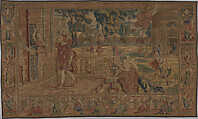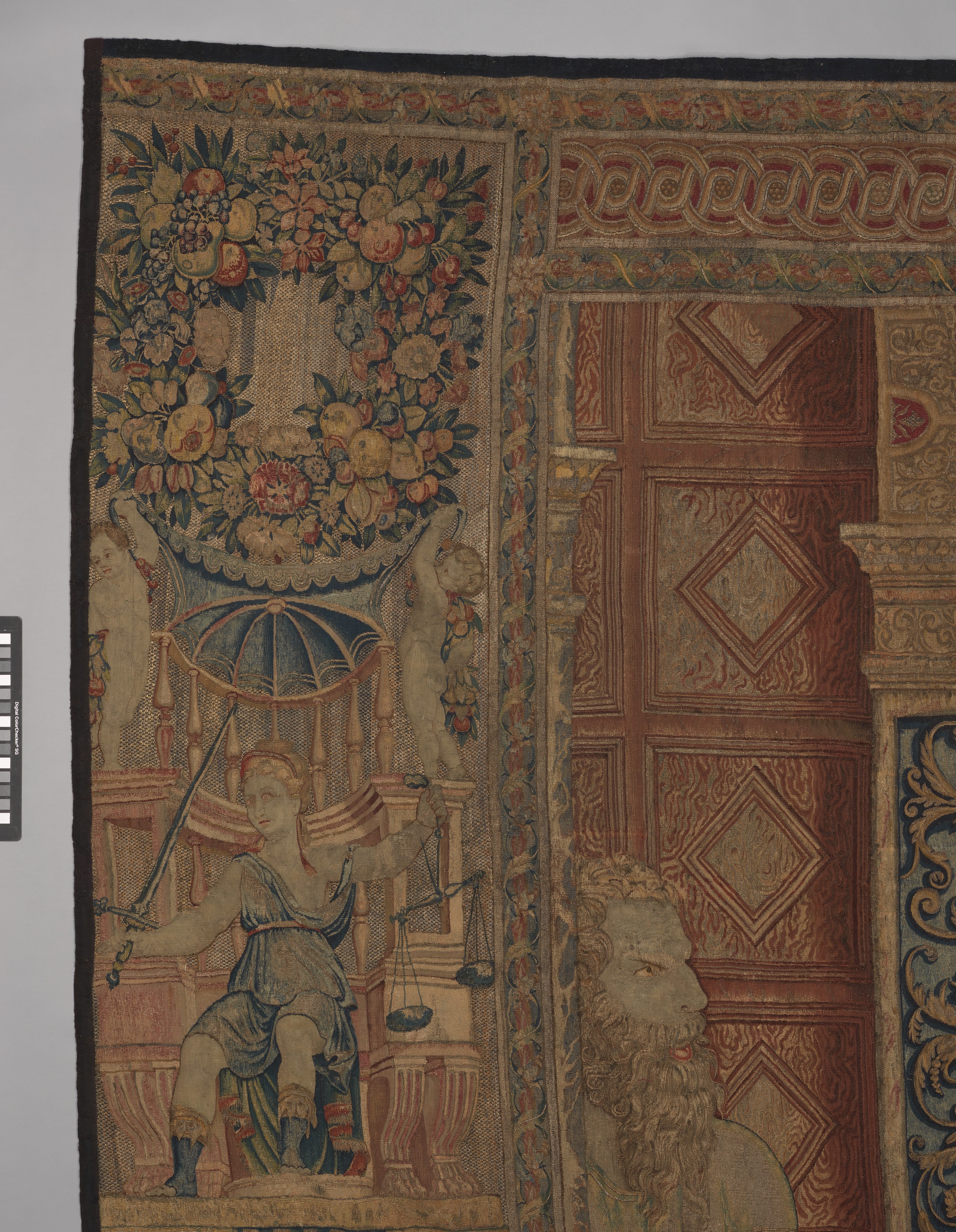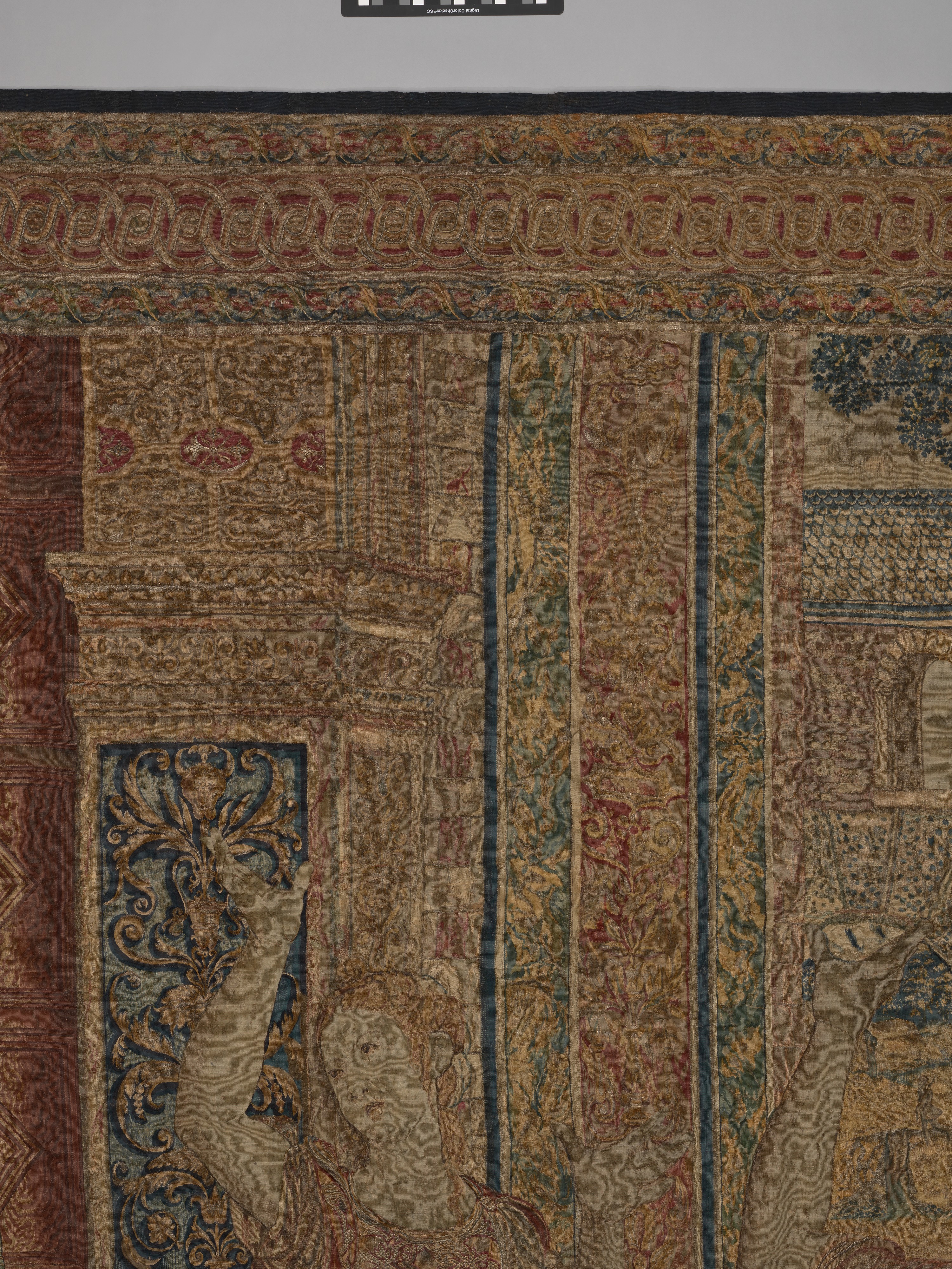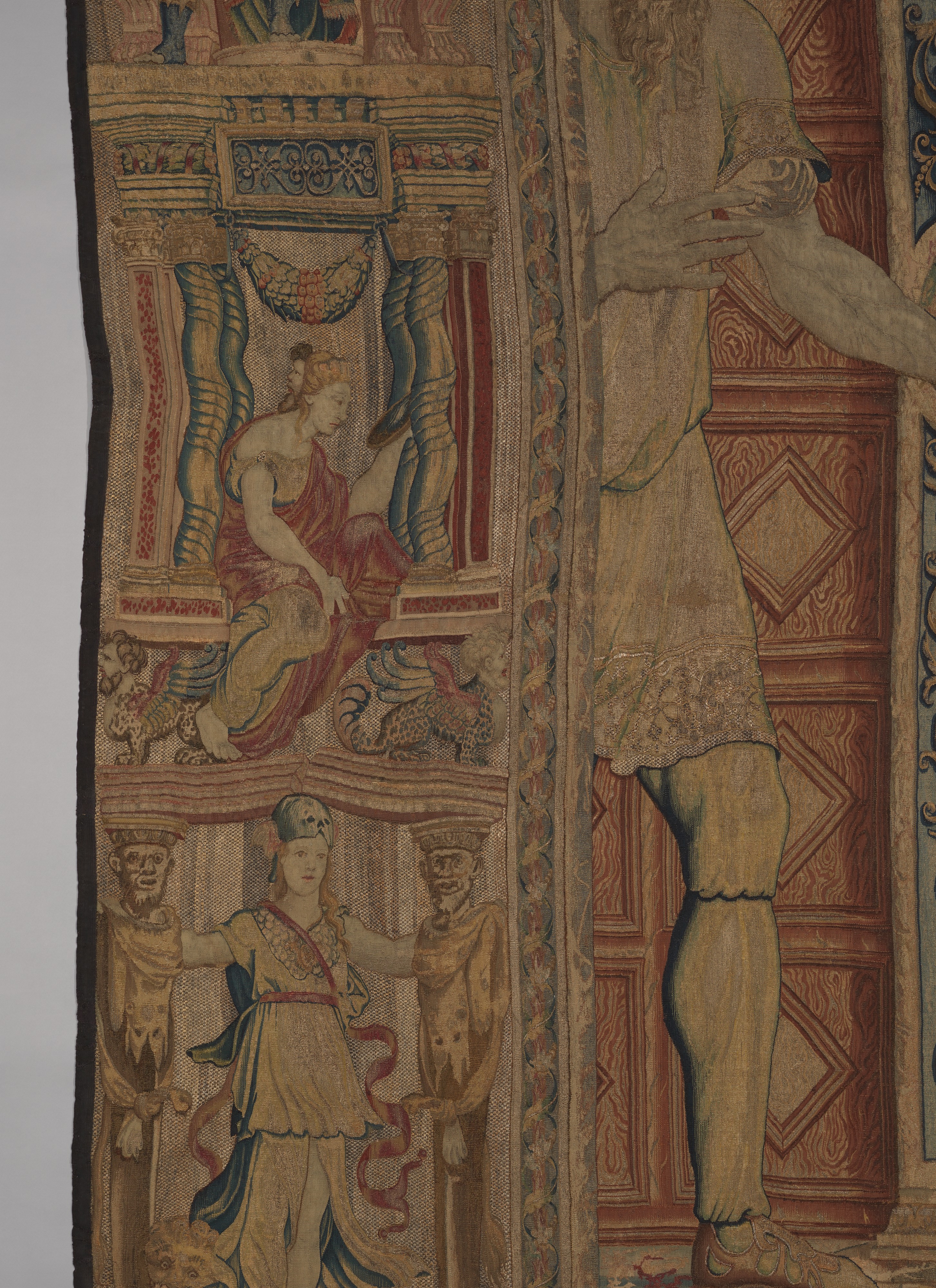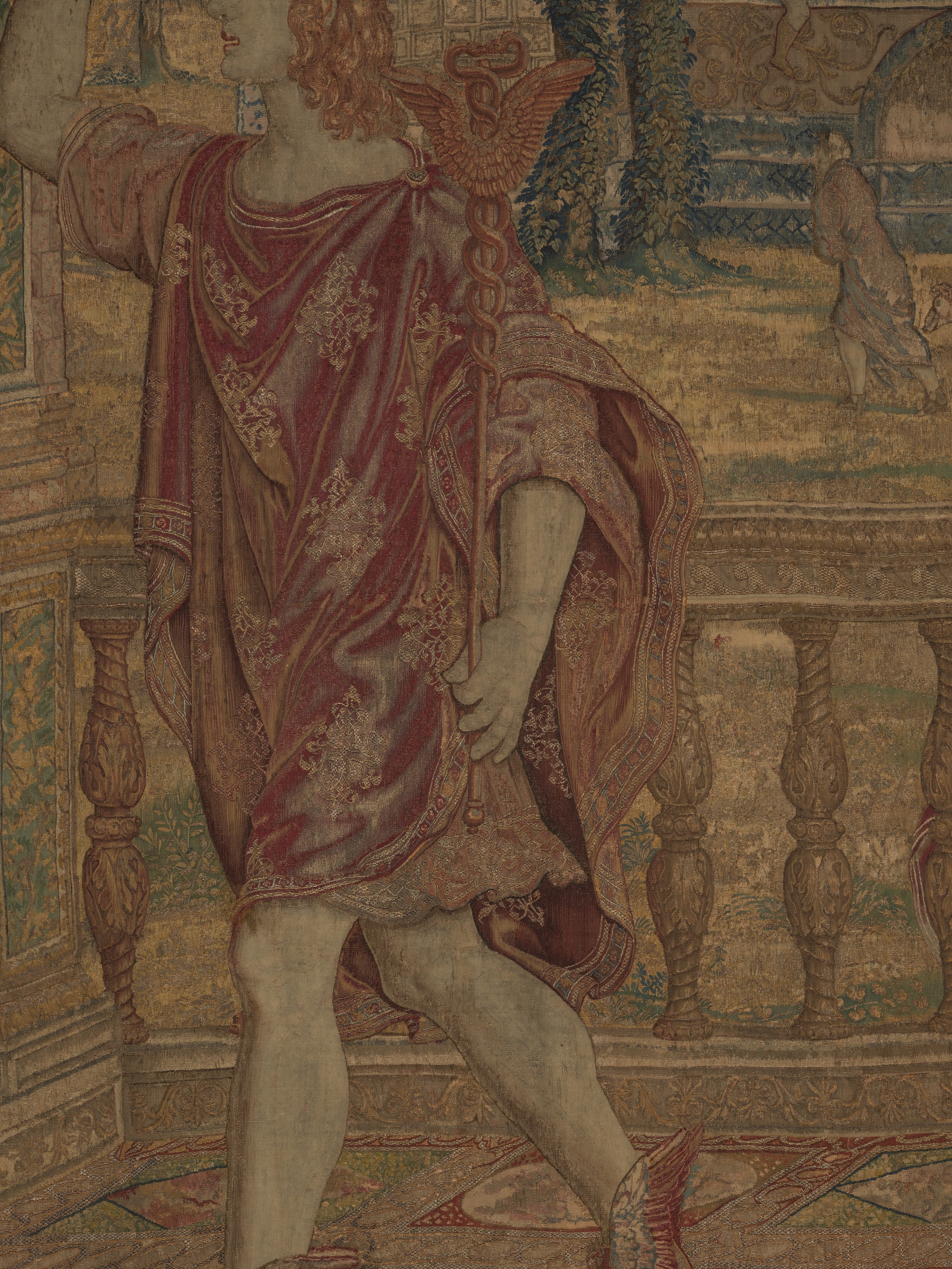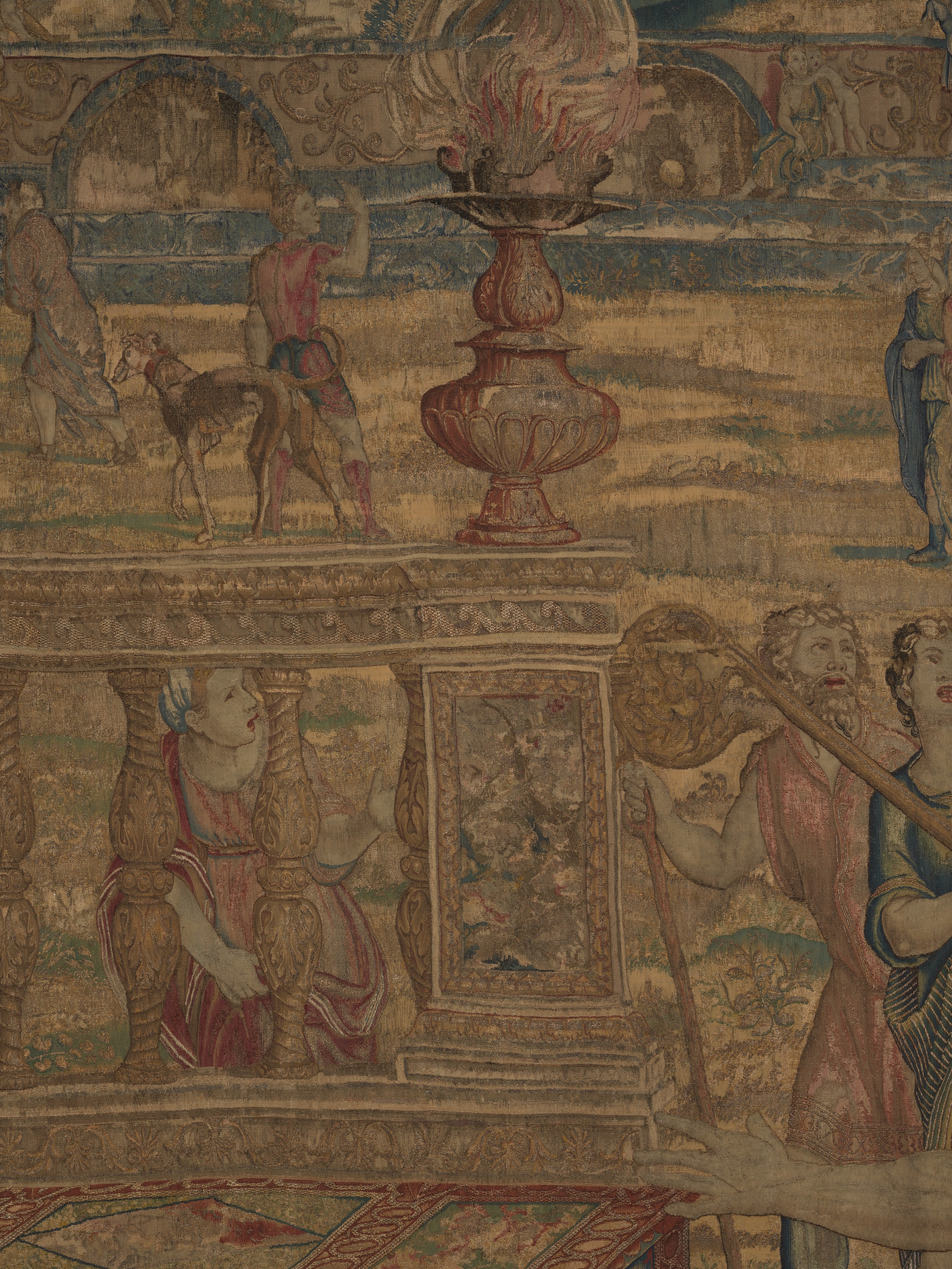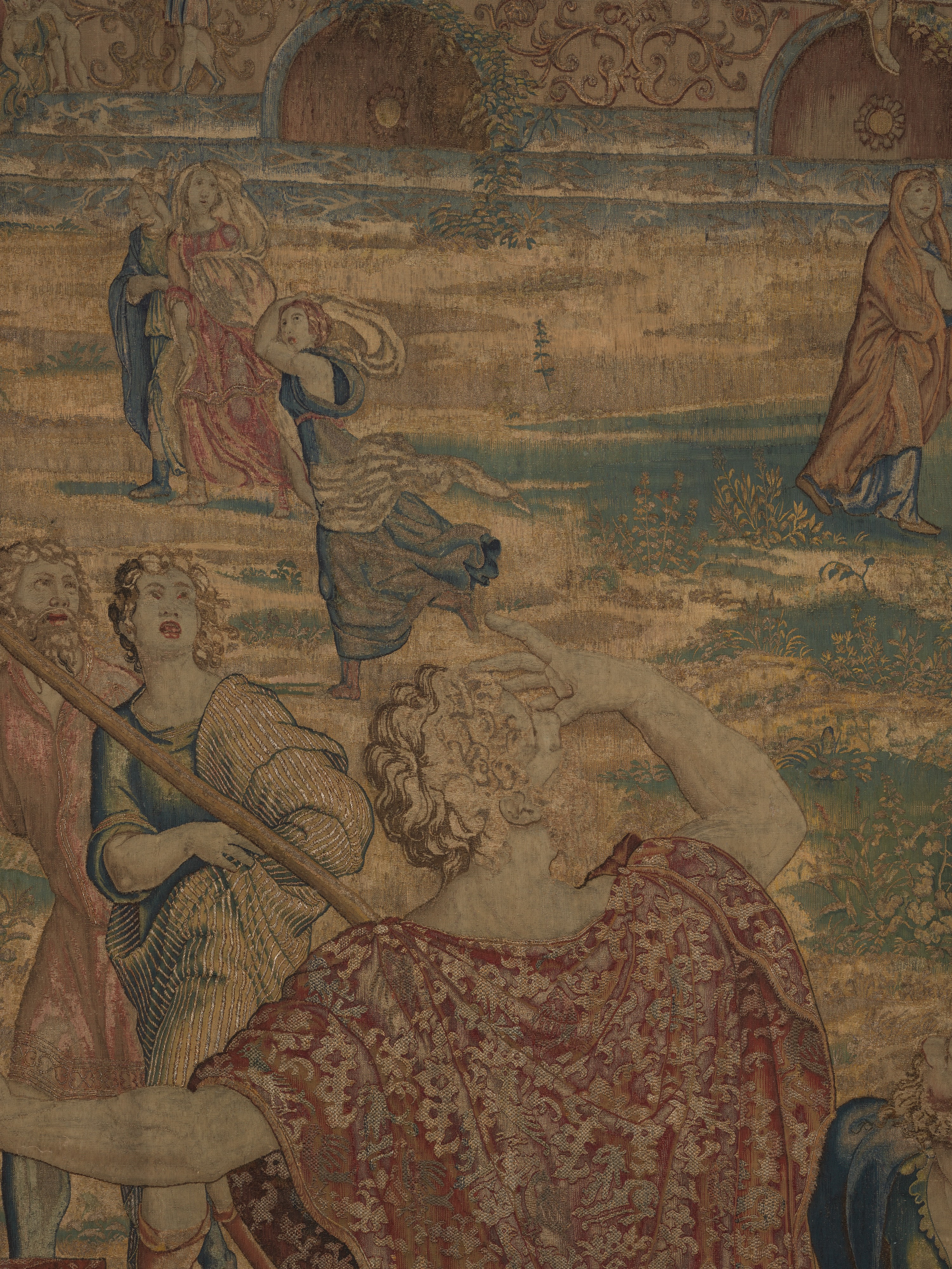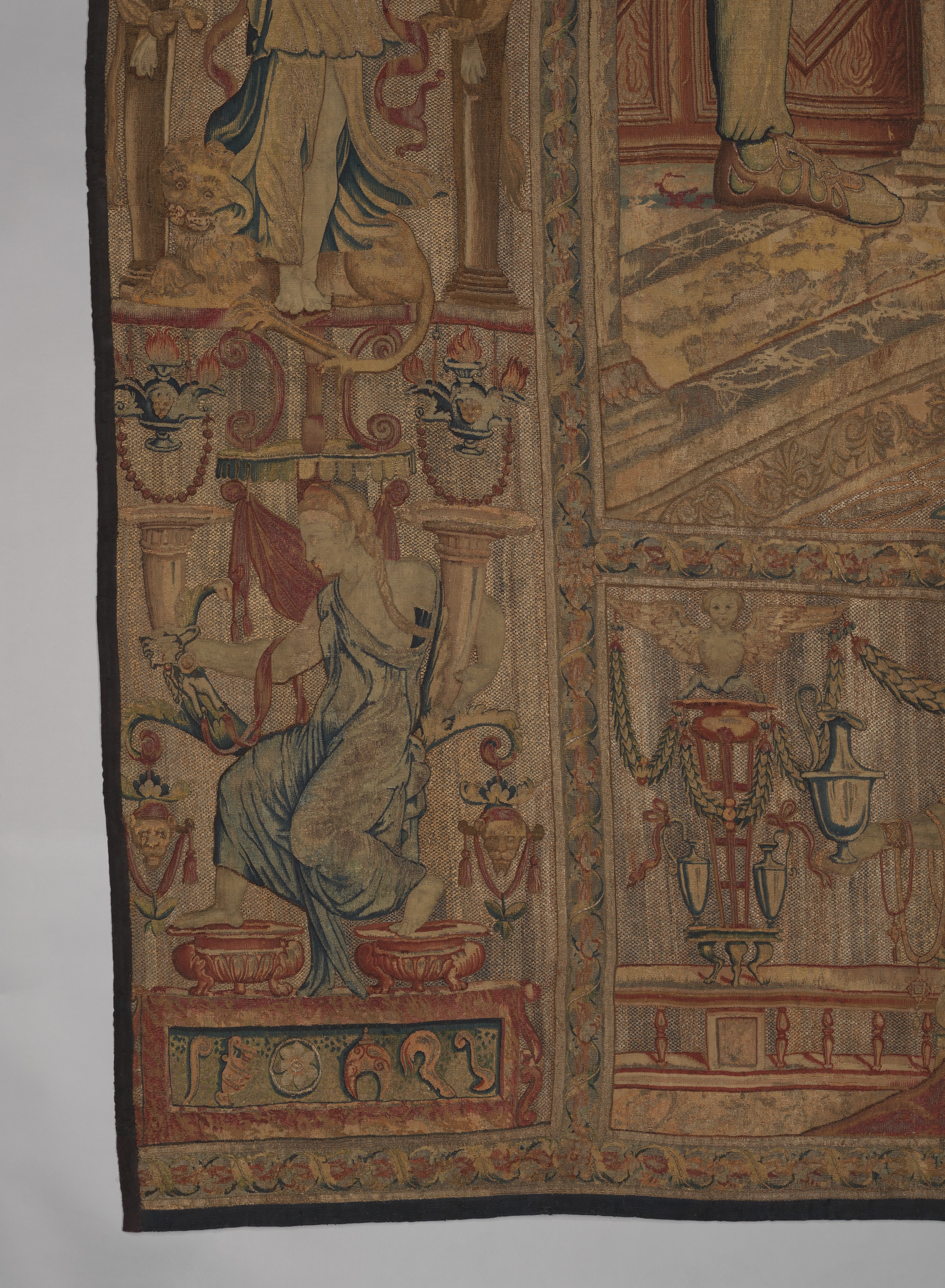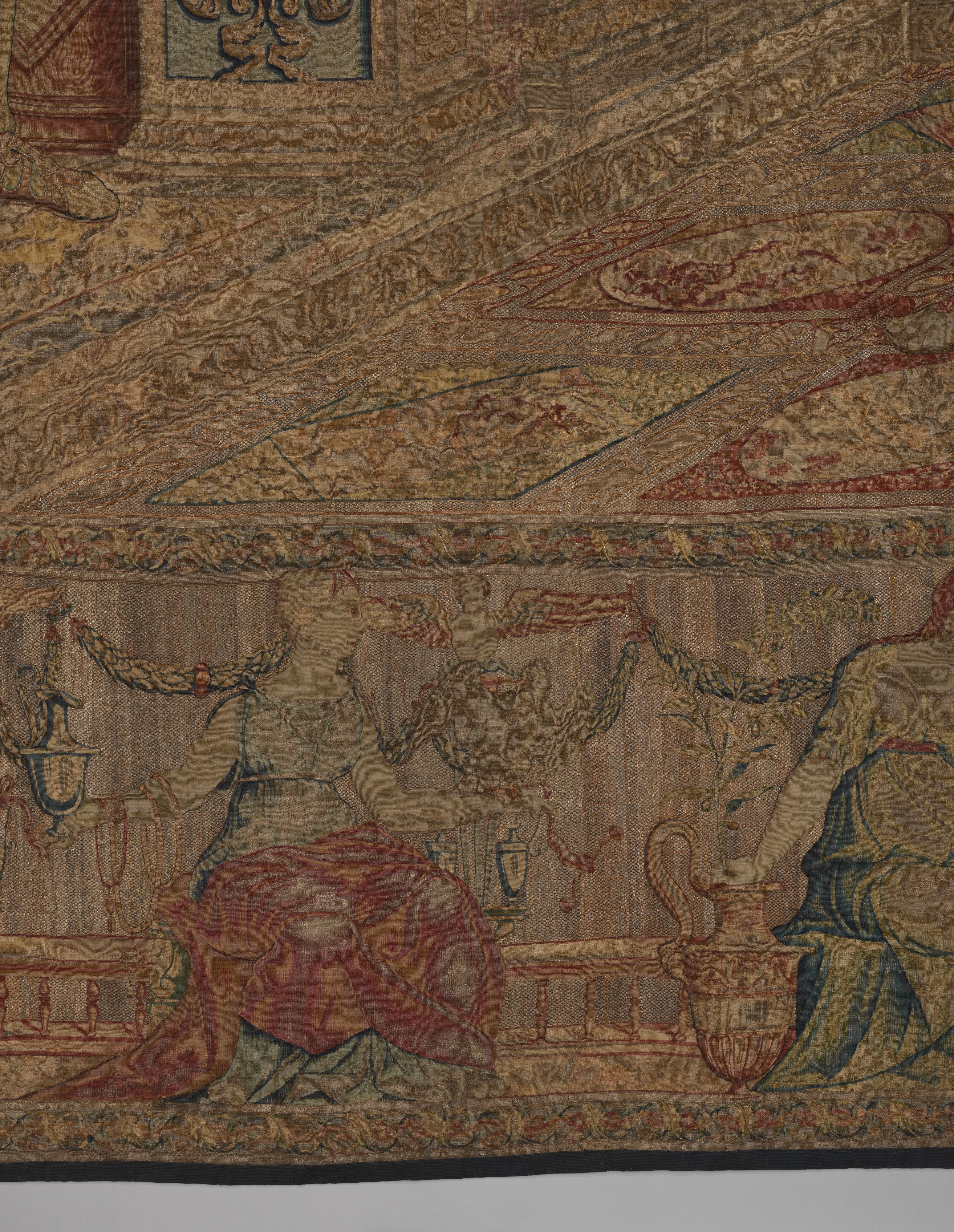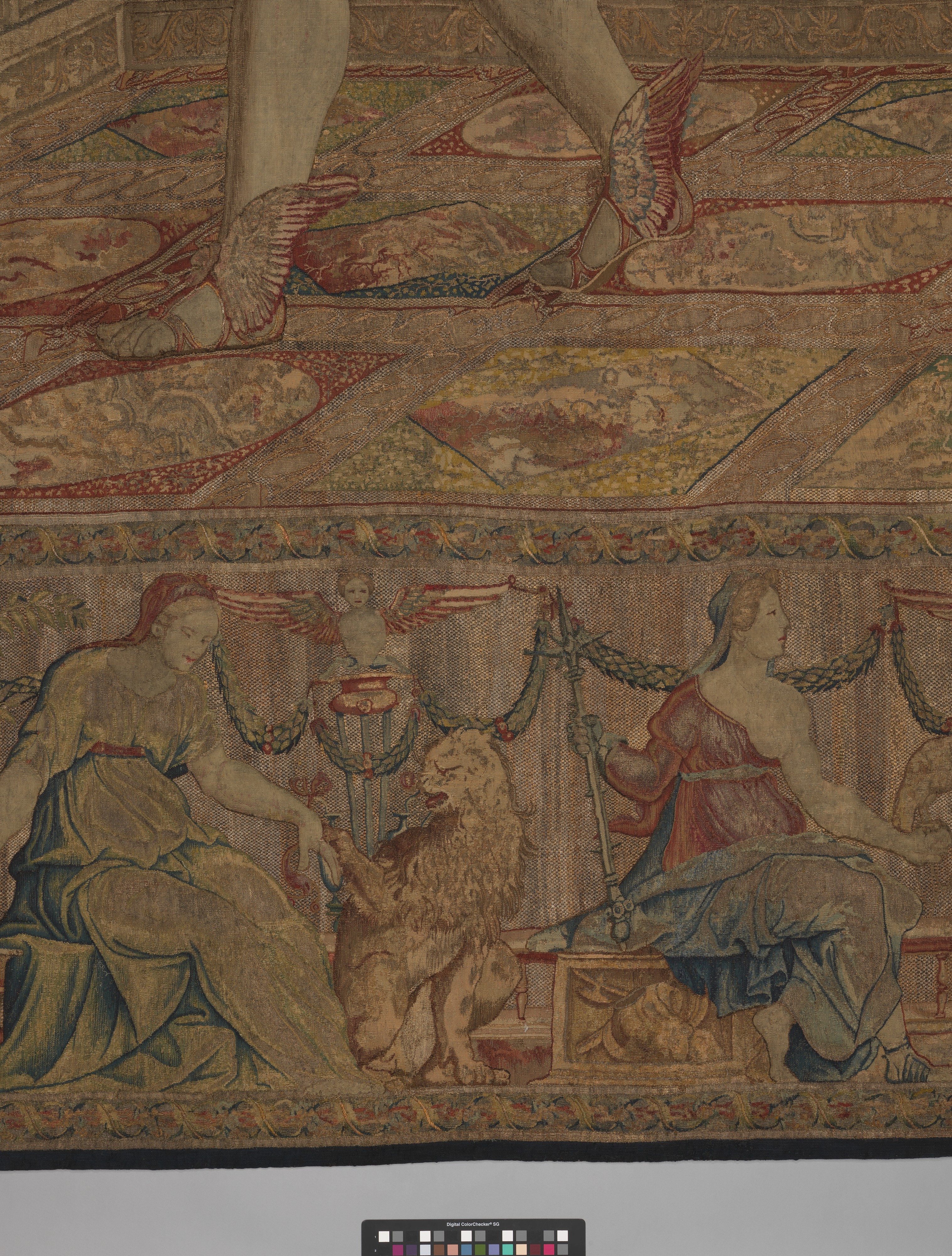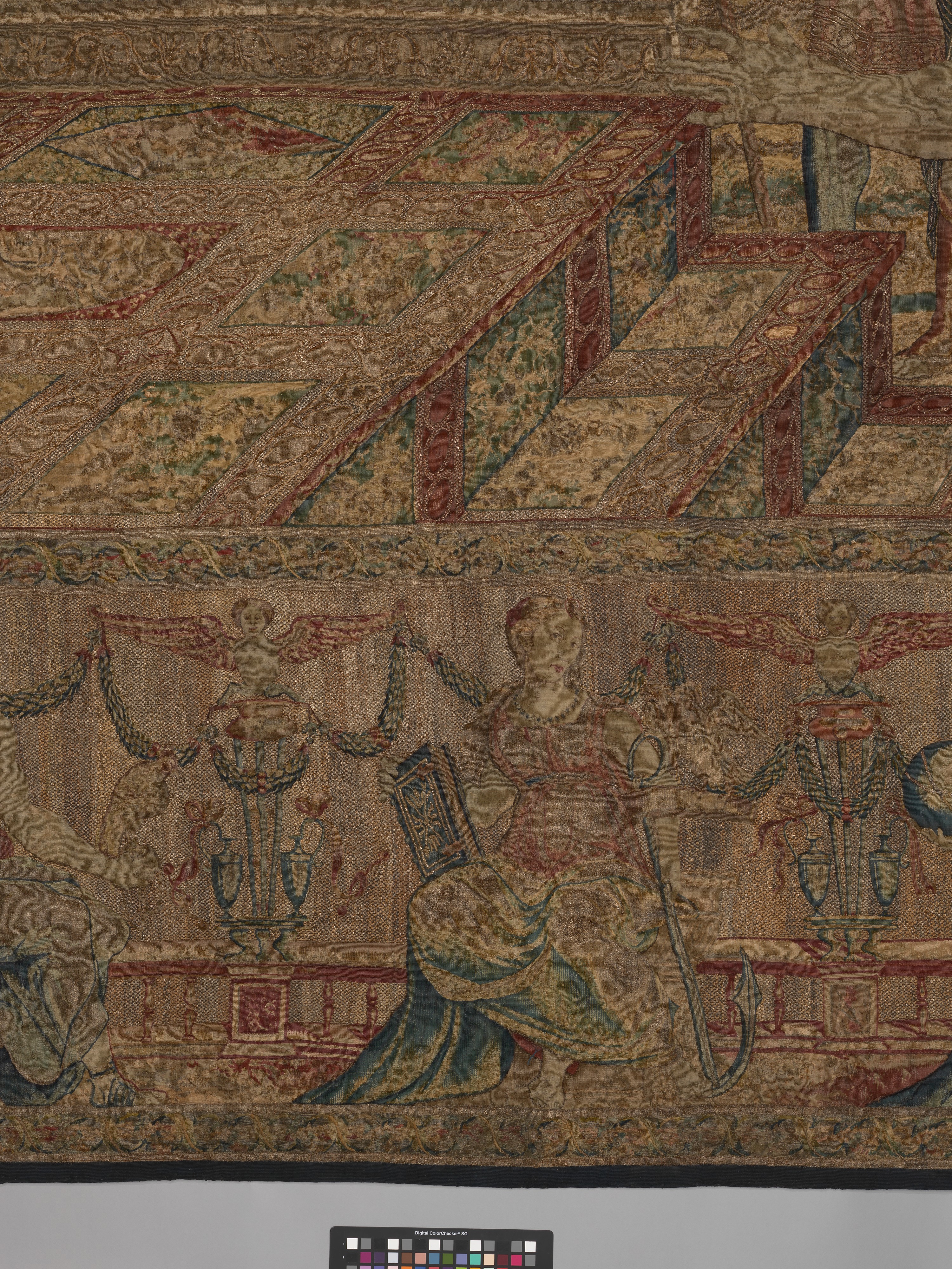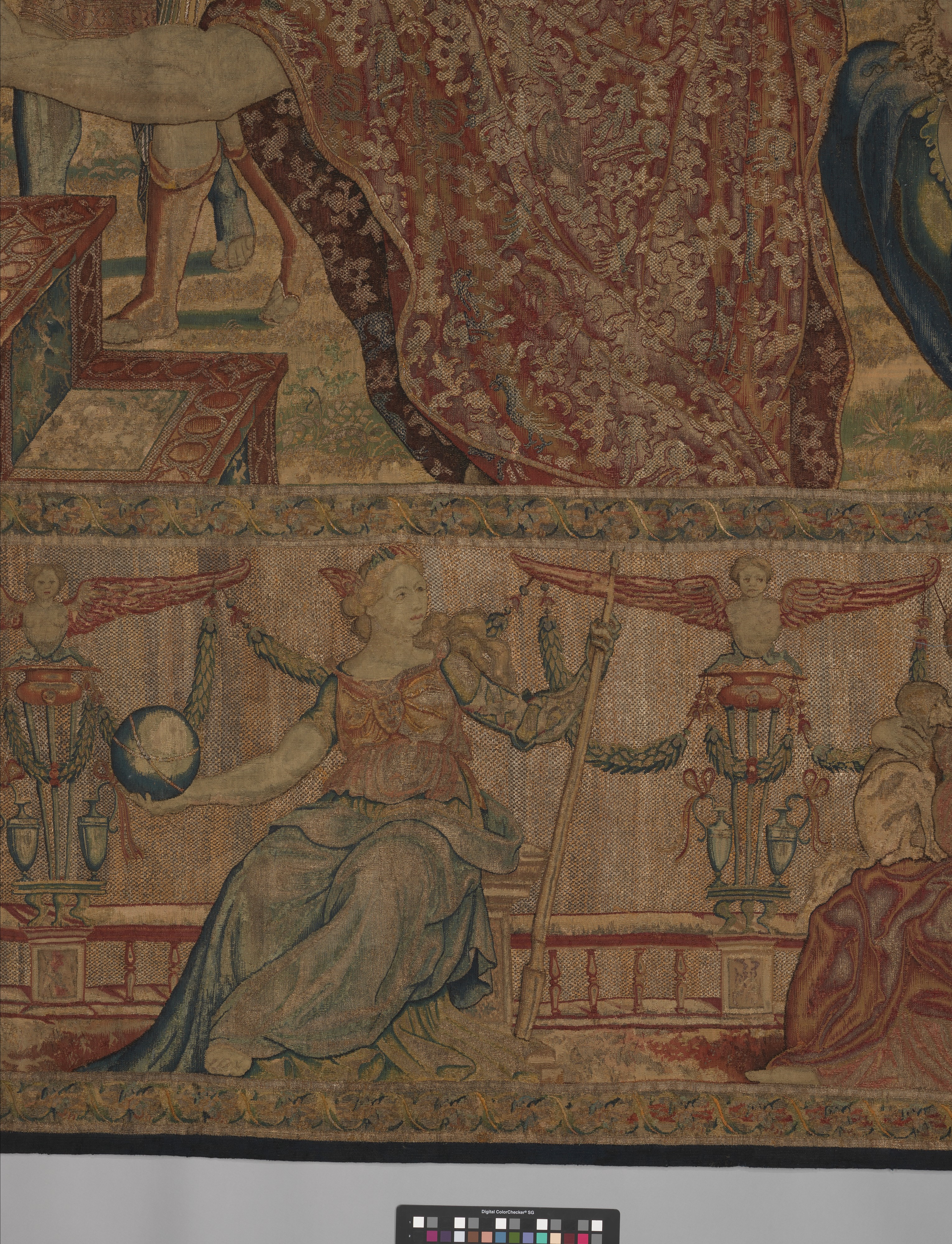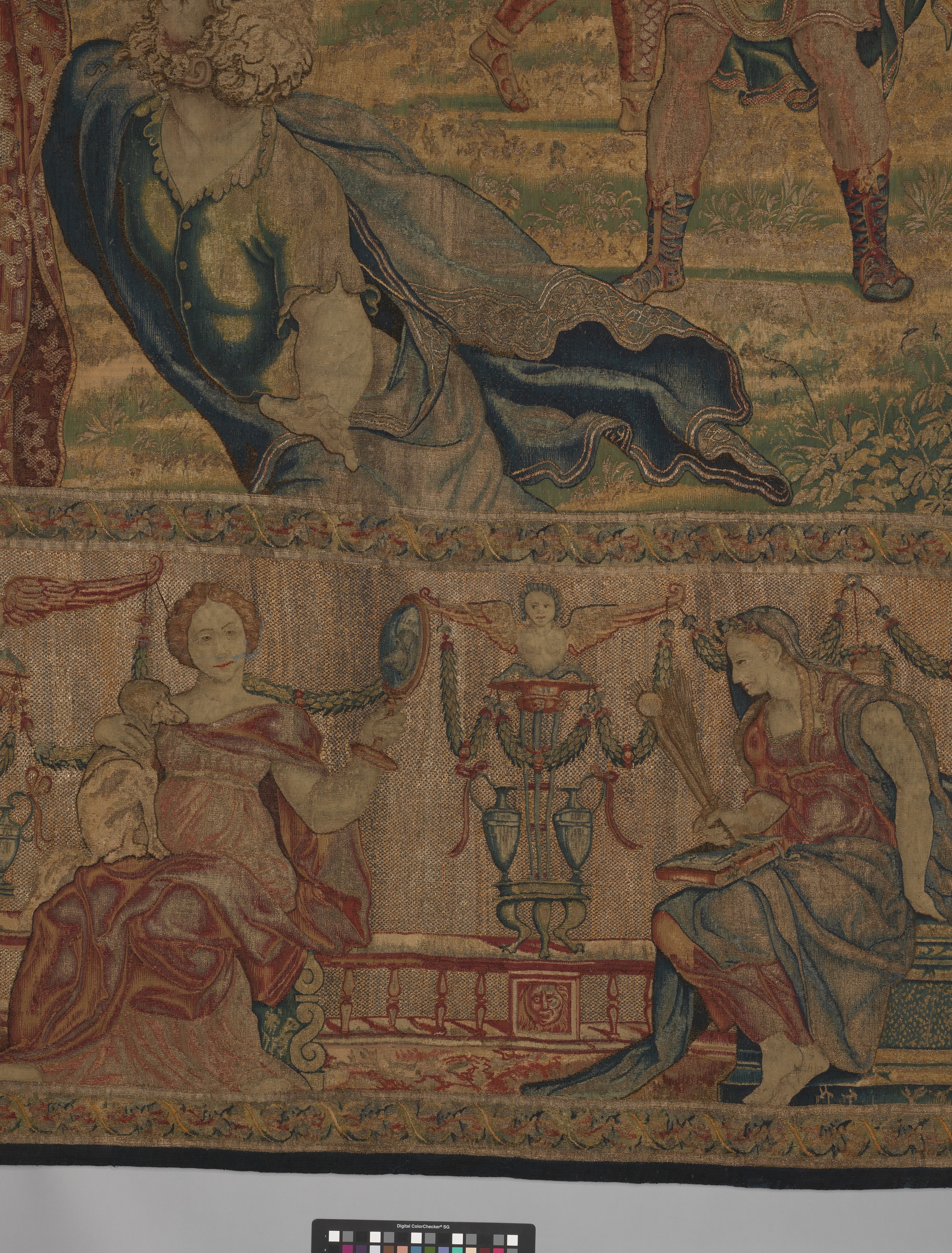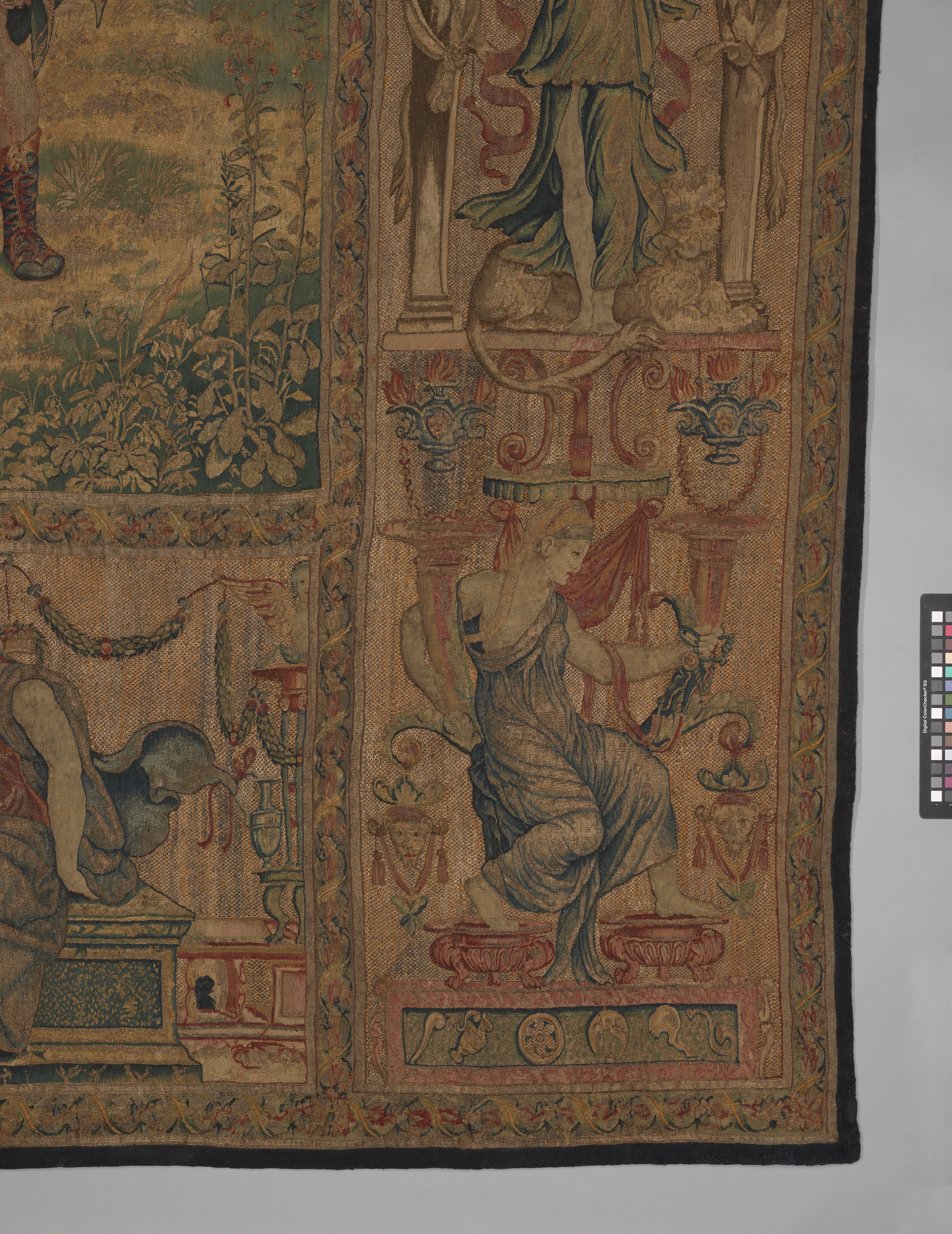Mercury Changes Aglauros to Stone, from the Story of Mercury and Herse
Design attributed to Giovanni Battista Lodi da Cremona Italian
Border design attributed to Giovanni Francesco Penni Italian
Weaving workshop directed by Willem de Pannemaker Flemish
Picking up the narrative from the tapestry of Aglauros’s Vision of the Bridal Chamber of Herse (also in The Met's collection, 41.190.135), this is the final episode in the story of the god Mercury’s love for the mortal princess of Athens, Herse. Emboldened by her jealous vision of Mercury and Herse’s union, Herse’s sister Aglauros barred his entry to her sister’s apartments. In his anger and frustration, Mercury transformed Aglauros into stone; in the tapestry, we see her disappearing into the door-frame. Mercury can seen again at the right, flying away and leaving the longed-for union with Herse unfulfilled. Such was the appeal of Lodi’s designs for this tapestry series that his cartoon-models were used, and reused, for decades: Willem de Pannnemaker, one of the most admired and successful master-weavers working in Brussels, directed the weaving of this sumptuous edition approximately thirty years after it was designed.
Due to rights restrictions, this image cannot be enlarged, viewed at full screen, or downloaded.
This artwork is meant to be viewed from right to left. Scroll left to view more.
